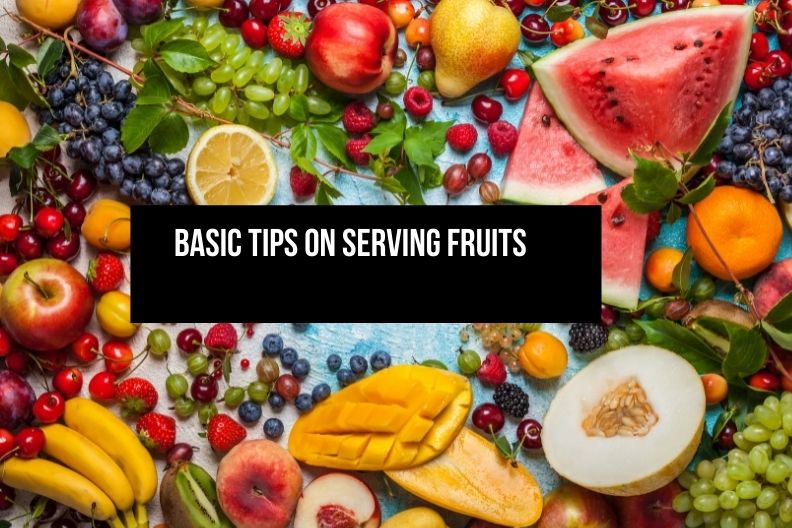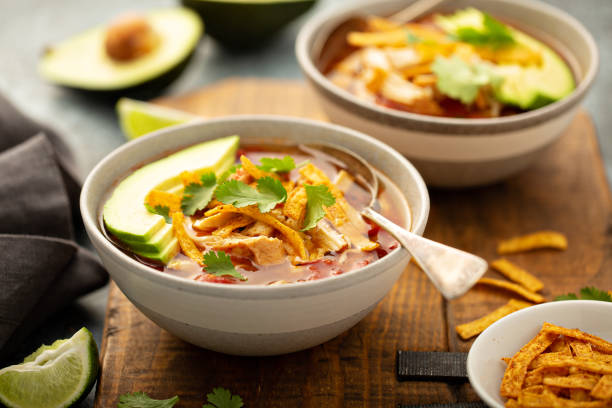This post contains affiliate links. This means I will make a commission at no extra cost to you should you click through and make a purchase. Read the full disclosure here.
It is no secret fruits are an important part of the human diet. But what about serving fruits? Well, first and foremost all fruits for serving should be perfectly ripe and sound. Immature fruit is never wholesome, and owing to the large percentage of water in its composition, fruit is very prone to change; hence over-ripe fruit should not be eaten, as it is liable to ferment and decompose in the digestive tract.
The fruit that has begun, however slightly, to decay, should be rejected. Juice circulates through its tissues in much the same manner as the blood circulates through animal tissues, though not so rapidly and freely. The circulation is sufficient, however, to convey to all parts the products of decomposition, when only a small portion has undergone decay, and although serious results do not always follow the use of such fruit, it certainly is not first-class food.
If intended to be eaten raw, fruit should be well ripened before gathering and should be perfectly fresh. Fruit that has stood day after day in a dish upon the table, in a warm room, is far less wholesome and tempting than that brought fresh from the storeroom or cellar. All fruits should be thoroughly cleansed before serving. Such fruit as cherries, grapes, and currants may be best washed by placing in a colander, and dipping in and out of a pan of water until perfectly clean, draining and drying before serving.
Table of Contents
DIRECTIONS FOR SERVING FRUITS
Apples
In serving these, the “queen of all fruits,” much opportunity is afforded for a display of taste in their arrangement. After wiping clean with a damp towel, they may be piled in a fruit basket, with a few sprigs of green leaves here and there between their rosy cheeks. The feathery tops of carrots and celery are pretty for this purpose. Oranges and apples so arranged, make a highly ornamental dish.
Raw mellow sweet apples make a delicious dish when pared, sliced, and served with cream.
Bananas
Cut the ends from the fruit and serve whole, piled in a basket with oranges, grapes, or plums. Another way is to peel, slice, and serve with thin cream. Bananas are also very nice sliced, sprinkled lightly with sugar, and before it had quite dissolved, covered with orange juice. Sliced bananas, lightly sprinkled with sugar, alternating in layers with sections of oranges, make a most delicious dessert.
Cherries
Serve on stems, piled in a basket or high dish, with bits of green leaves and vines between. Rows of different colored cherries, arranged in pyramidal form, make also a handsome dish.
Currants
Large whole clusters may be served on the stem, and when it is possible to obtain both red and white varieties, they make a most attractive dish. Put them into cold water for a little time, cool thoroughly, and drain well before using. Currants, if picked from the stems after being carefully washed and drained, maybe served lightly sprinkled with sugar. Currants and raspberries served together, half and half, or one third currant two-thirds raspberries, are excellent. Only the ripest of currants should be used.
Gooseberries
When fresh and ripe, the gooseberry is one of the most delicious of small fruits. Serve with stems on. Drop into cold water for a few moments, drain, and pile in a glass dish for the table.
Grapes
Grapes need always to be washed before serving. Drop the bunches into ice water, let them remain ten or fifteen minutes, then drain and serve. An attractive dish may be made by arranging bunches of different colored grapes together on a plate edged with grape leaves.
Melons
Watermelons should be served very cold. After being well washed on the outside, put on ice until needed. Cut off a slice at the ends, that each half may stand upright on a plate, and then cut around in even slices. Instead of cutting through the center into even halves, the melon may be cut in points back and forth around the entire circumference, so that when separated, each half will appear like a crown.
Another way is to take out the central portion with a spoon, in cone-shaped pieces, and arrange it on a plate with a few bits of ice. Other melons may be served in halves, with the seeds removed. The rough skin of the cantaloupe should be thoroughly scrubbed with a vegetable brush, then rinsed and wiped, after which bury the melon in broken ice till serving time; divide into eighths or sixteenths, remove the seeds, reconstruct the melon, and serve surrounded with ice, on a folded napkin, or arranged on a bed of grape leaves. Do not cool the melon by placing ice upon the flesh, as the moisture injures the delicate flavor.
Oranges
Serve whole or cut the skin into eighths, halfway down, separating it from the fruit, and curling it inward, thus showing half the orange white and the other half yellow; or cut the skin into eighths, two-thirds down, and after loosening from the fruit, leave them to spread open like the petals of a lily. Oranges sliced and mixed with well-ripened strawberries, in the proportion of three oranges to a quart of berries, make—a palatable dessert.
Peaches and Pears
Pick out the finest, and wipe the wool from the peaches. Edge a plate with uniformly sized leaves of foliage plant of the same tints as the fruit, and pile the fruit artistically upon it, tucking sprays or tips of the plant between. Bits of ice may also be intermingled. Yellow Bartlett pears and rosy-cheeked peaches arranged in this way are most ornamental.
Peaches and Cream
Pare the peaches just as late as practicable, since they become discolored by standing. Always use a silver knife, as steel soon blackens and discolors the fruit. If sugar is to be used, do not add it until the time for serving, as it will start the juice, and likewise turn the fruit brown, destroying much of its rich flavor. Keep on ice until needed for the table. Add cream to each person’s dish.
Pineapples
The pineapple when fresh and ripened to perfection, is as mellow and juicy as a ripe peach, and needs no cooking to fit it for the table. Of course, it must be pared, and have the eyes and fibrous center removed. Then it may be sliced in generous pieces and piled up on a plate, or cut into smaller portions and served in saucers. No condiments are necessary; even the use of sugar detracts from its delicate flavor.
Pineapples found in some markets are, however, generally so hard and tough as to require cooking, or are valuable only for their juice, which may be extracted and used for flavoring other fruits. When sufficiently mellow to be eaten raw, they are usually so tart as to seem to require a light sprinkling of sugar to suit most tastes. Pineapples pared, cut into dice or small pieces, lightly sprinkled with sugar, to which just before serving, a cup of orange juice is added, form a delicious dish.
Plums
Plums make a most artistic fruit piece, served whole and arranged with bunches of choice green grapes, in a basket or glass dish. A fine edge may be made from the velvety leaves of dark purple foliage plants.
Pressed Figs
Look over carefully, and select only such as are perfectly good. They may be served dry, mixed with bunches of raisins, or steamed over a kettle of boiling water. Steamed figs make an excellent breakfast dish, and are considered much more wholesome than when used dry. Steamed raisins are likewise superior to dried raisins.
Raspberries, Blackberries, Dewberries, Blueberries, and Whortleberries
The above requires careful looking over to remove all insects, stems, and over-ripe fruit. Blueberries and whortleberries frequently need to be washed. They are then drained by spreading on a sieve or colander. Perfectly ripe, they are more healthful without condiments, but sugar and cream are usually considered indispensable.
If necessary to wash strawberries, they should be put into cold water, a few at a time, pushed down lightly beneath the water several times until entirely clean, then taken out one by one, hulled, and used at once. Like all other small fruits and berries they are more wholesome served without cream, but if the cream is used, each person should be allowed to add it to his own dish, as it quickly curdles and renders the whole dish unsightly; if allowed to stand, it also impairs the flavor of the fruit.
Frosted Fruit
Prepare a mixture of the beaten white of egg, sugar, and very little cold water. Dip nice bunches of clean currants, cherries, or grapes into the mixture; drain nearly dry, and roll lightly in powdered sugar. Lay them on white paper to dry. Plums, apricots, and peaches may be dipped in the mixture, gently sprinkled with sugar, then allowed to dry. This method of preparing fruit is not to be commended for its wholesomeness, but it is sometimes desirable for ornament.





